Bangkok’s Siriraj Museum: Not For the Faint Hearted
Of grisly exhibits and graphic displays of human parts
Bored of shopping, visiting temples, and all the typical tourist-stuff? Here is something different for you, but the question is, are you up for it? The Siriraj Medical Museum in Bangkok is not your typical museum. Also known as the Death Museum, it features an array of exhibits that showcase the darker side of medical science, including graphic displays of human anatomy, preserved body parts, and disease specimens.
⚠️ Be warned! It's important to note that this museum is not for the faint-hearted, and may not be suitable for children or those easily disturbed by graphic content.
Exhibits
Siriraj Hospital is Thailand's first modern medical hospital and school, founded by King Rama V in 1888. The medical museum comprises five smaller museums, each with its own unique exhibits: the Congdon Anatomical Museum, Songkran Niyomsane Forensic Medicine Museum, Parasitology Museum, the EIlis Pathological Museum, and the Sood Sangvichien Prehistoric Museum & Laboratory. There is another museum right next to the medical museum, the Siriraj Bimuksthan Museum, which requires a separate entry fee.
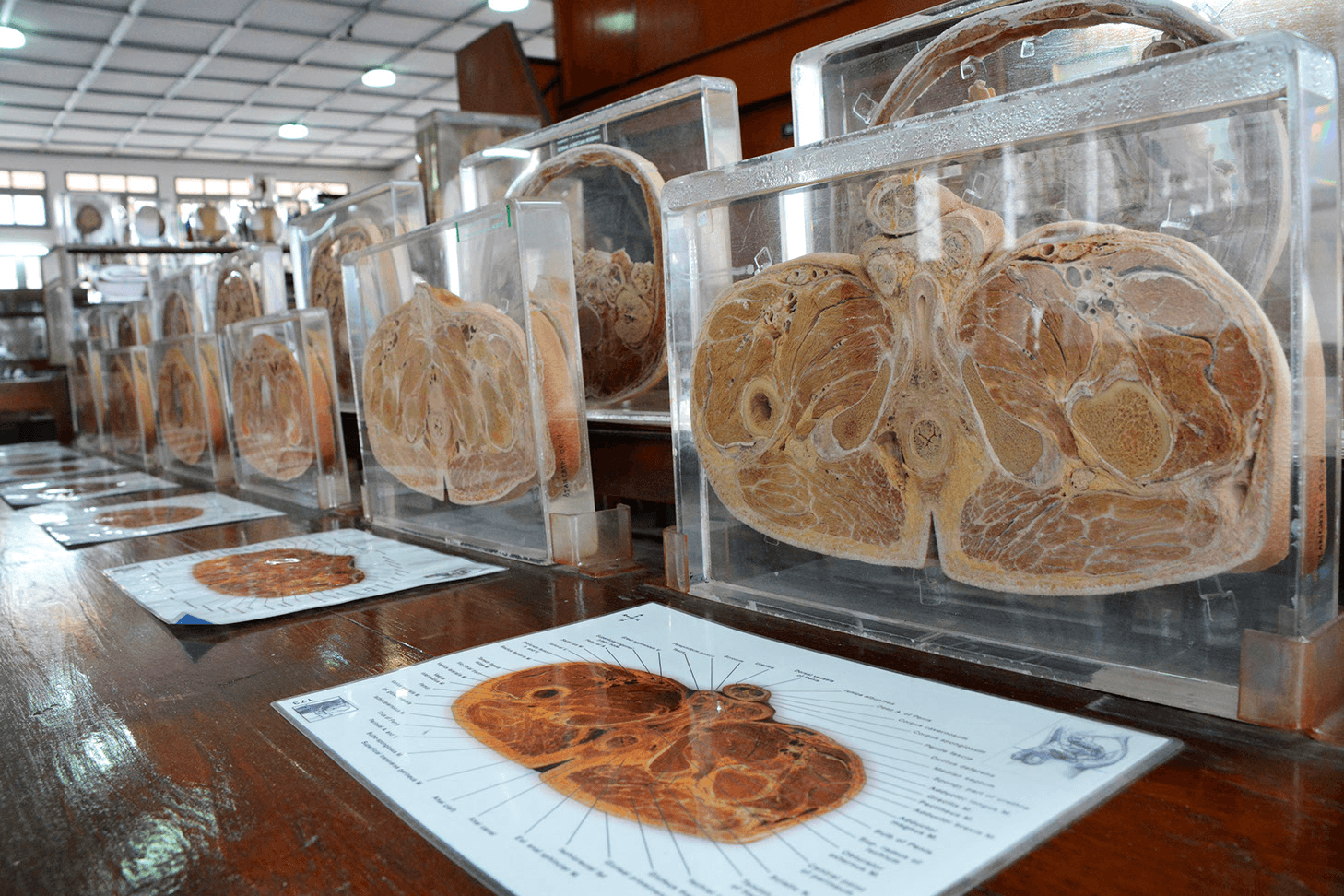
Congdon Anatomical Museum
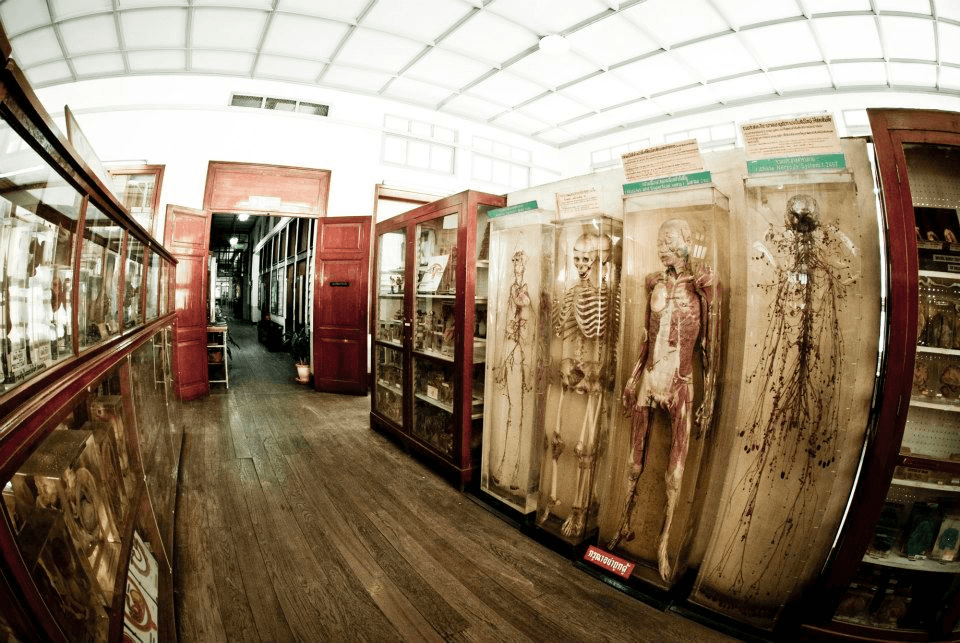
The Congdon Anatomical Museum was founded in 1927 and contains more than 2,000 specimens about human anatomy. The exhibits are around the human organ system, with each organ broken down and put on display. You can expect to see skeletons, figures of humans and animals, bodies and organs of Siamese twins preserved in ethyl-alcohol, and one of the world's very few complete peripheral nervous and blood systems dissected from human bodies.
Songkran Niyomsane Forensic Museum
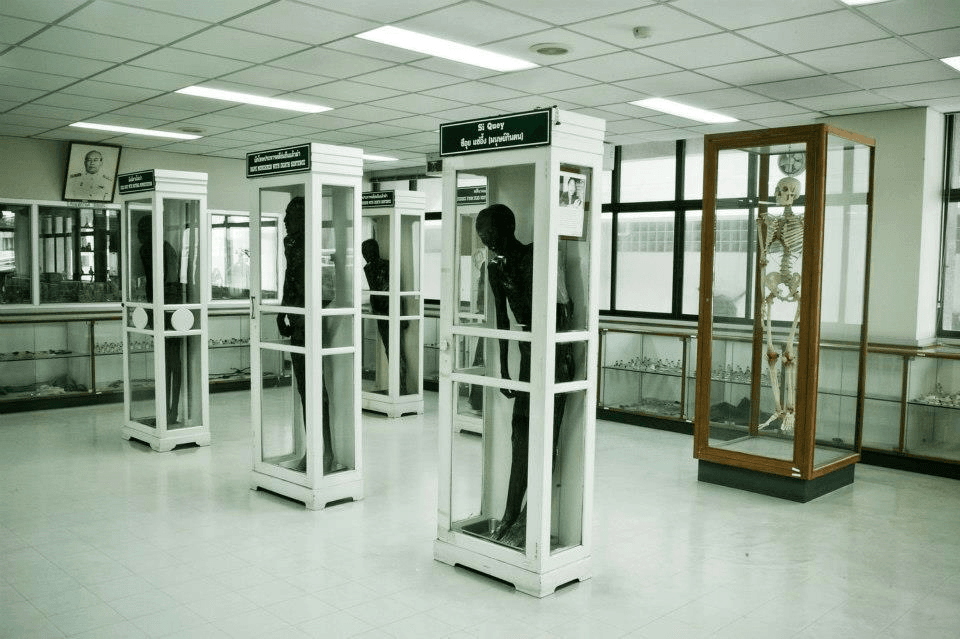
The forensic museum involves several elements in forensic science, and would be of interest to those who are interested in forensics. In addition to learning about the development of forensic science and medicine, you will also get to learn about the various methods of murer and see exhibits of autopsy instruments that were used in the investigation of past murder cases.
Parasitology Museum
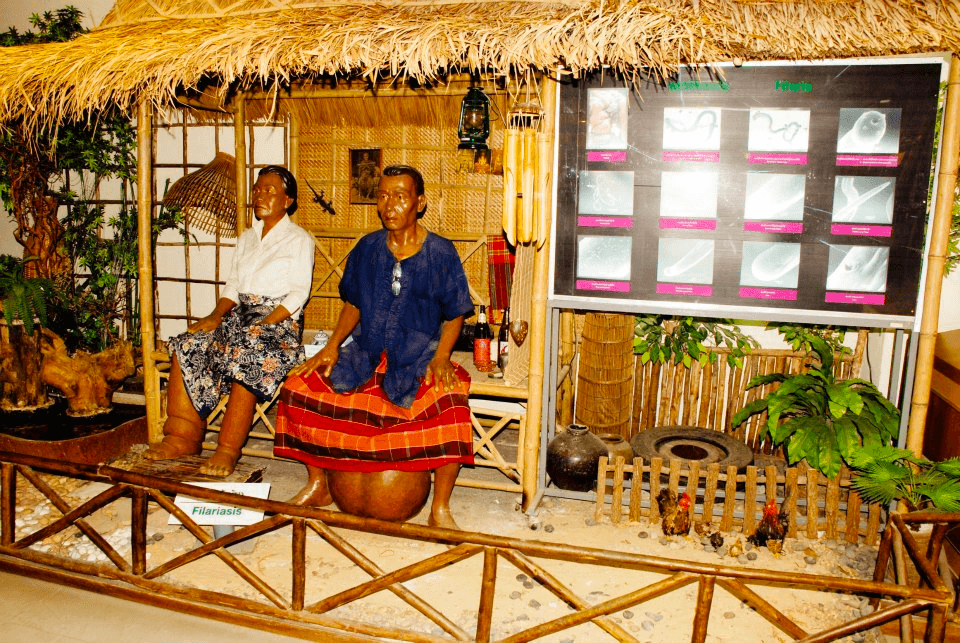
This museum focuses on diseases that are caused by parasites. The exhibits include more than just the various kinds of parasites and poisonous animals such as whipworms and roundworms, you will also get to see the organs of patients that have been infected.
Ellis Pathological Museum
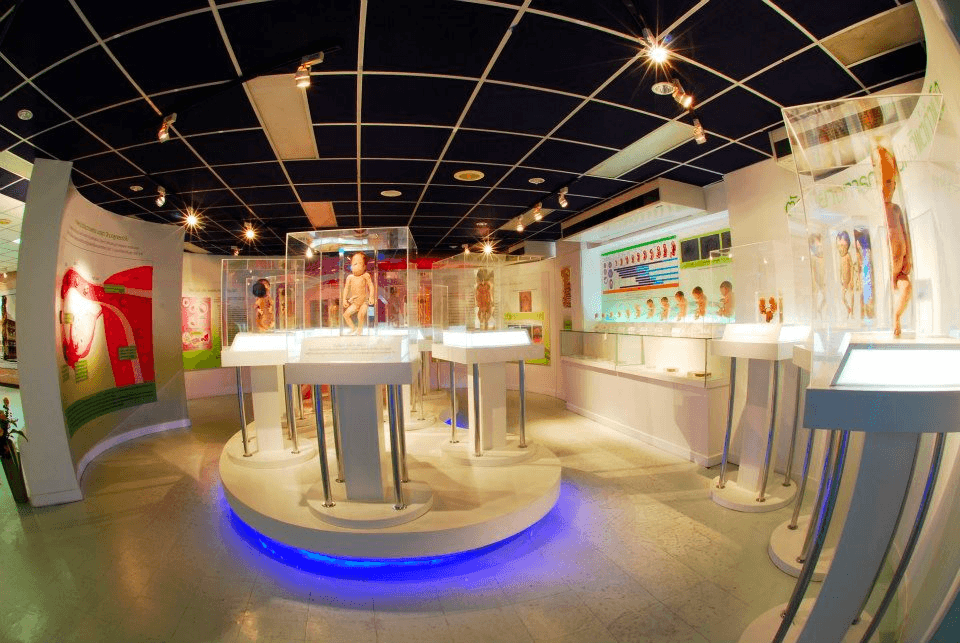
The Ellis Pathological Museum shows the evolution of pathology (the science of the causes and effects of diseases) in Thailand. Exhibits include human organs that have been infected by different diseases such as heart disease and cancer, as well as exhibits surrounding human physical disorder and its treatment process.
Sood Sangvichien Prehistoric Museum (currently closed)
The Sood Sangvichien Prehistoric Museum exhibits the evolution of life forms, from 500 million years ago to the beginning of primate era around 70 million years ago. The prehistoric museum is currently closed still further notice.
Siriraj Bimuksthan Museum (requires separate entry fee)
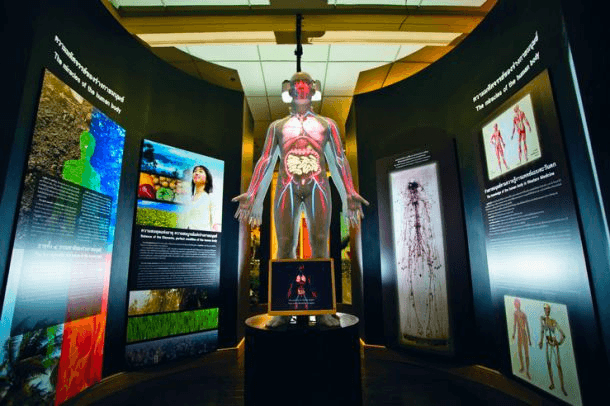
The Siriraj Bimuksthan Museum is the hospital’s newest museum that opened only in 2013. The museum is located in the renovated vintage architecture of the old Bangkok Noi train station. As compared to the other museums, the exhibits at Siriraj Bimuksthan Museum are much less disturbing. At this museum, you will find out more about the history of Thai medicines. There is also a surgical simulation in which visitors can experience the roles of physicians and nurses like being in the surgical room. Medicinal history aside, this museum is also have cultural significance, where you can find out more about the conservation of the former Railway Station Building and the Bangkok Noi community.
Should you visit this museum?
If you are intrigued by the exhibits and are in two minds about visiting this museum, to help you make a decision, here is a quick summary of what visitors to the museum have said:
- The exhibits are very interesting, though some people will prefer using the term strange. It will especially be so for those interested in forensics or human anatomy. But they are also very, very graphic so it might not be for everyone —especially not for young children.
- Although there are a lot of interesting exhibits, most of them are captioned in Thai. But if you don’t understand Thai, there are exhibits with QR codes that will bring up audio guides in English — so bring along your earphones.
- It is not the most convenient to get to, but definitely worth the detour if you are looking for something different. But be sure to check that it is open before heading down otherwise it will be a wasted trip.
- The Siriraj Bimuksthan Museum is interactive and engaging, and if you are visiting the museum, it is worth it to pay the additional 100THB to visit both museums.
Practical Information
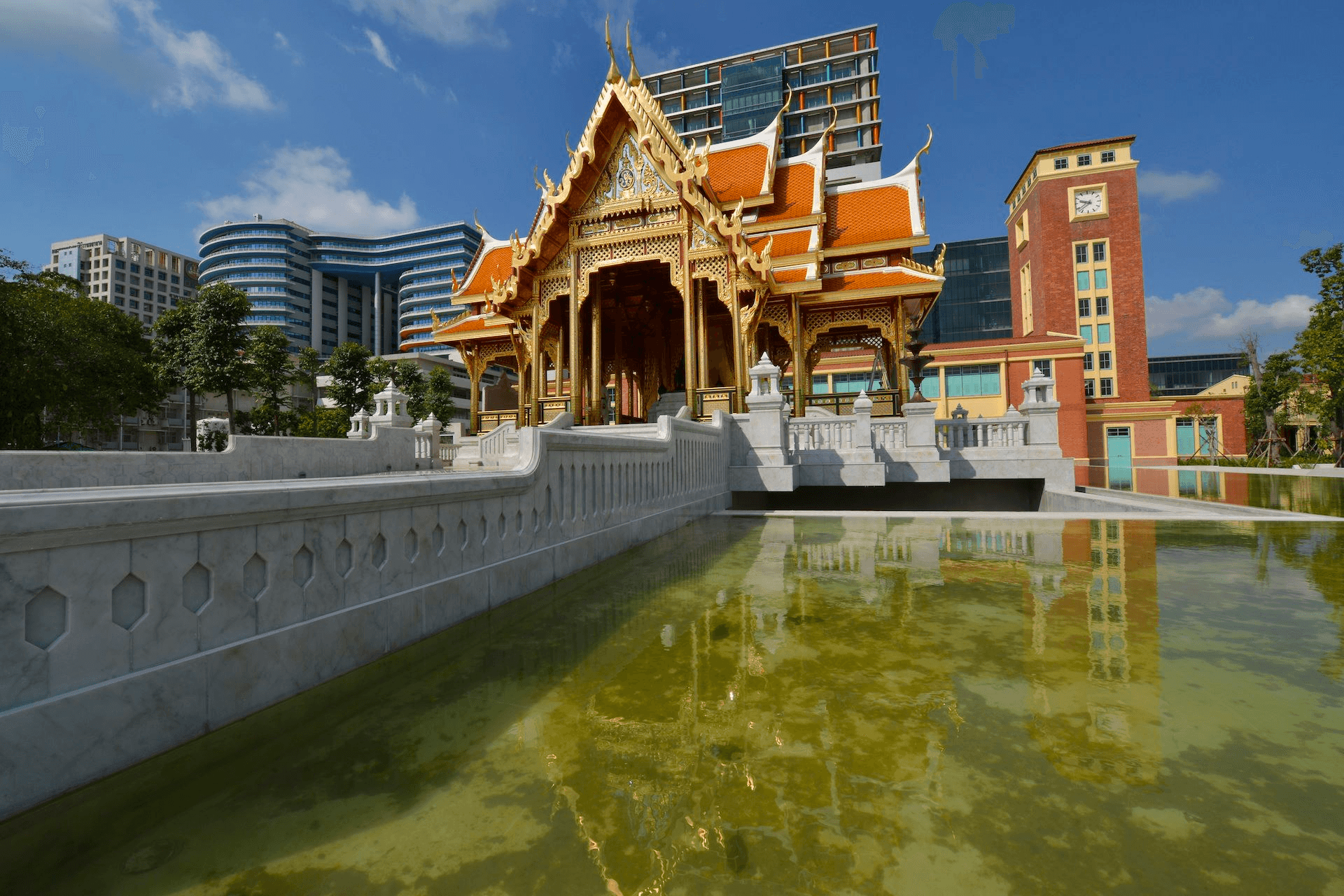
🗺️ Address: 2 Wang Lang Road, Bangkok Noi, Bangkok
⛵ How to get there: You can take one of these buses: 57, 81, 146, 149, 157; alternatively take the express boat or ferry to Rodfai pier / Wanglang pier / Prannok.
🕤 Opening Hours: 10am - 5pm from Wednesday to Monday. Last entry is at 3.30pm. Closed on Tuesday and public holidays. Refer to their Facebook page for unplanned closures.
💰Cost: 200THB to visit one museum (either the Medical Museum or the Siririaj Bimuksthan Museum); 300THB to visit both museums
::calloutIf you are planning to visit the museum, why not consider having breakfast (or lunch) at the nearby [Wang Lang Market](https://www.getnomad.app/destination-guides/must-try-breakfast-in-bangkok#wang-lang-market as well!]{icon="💡"}